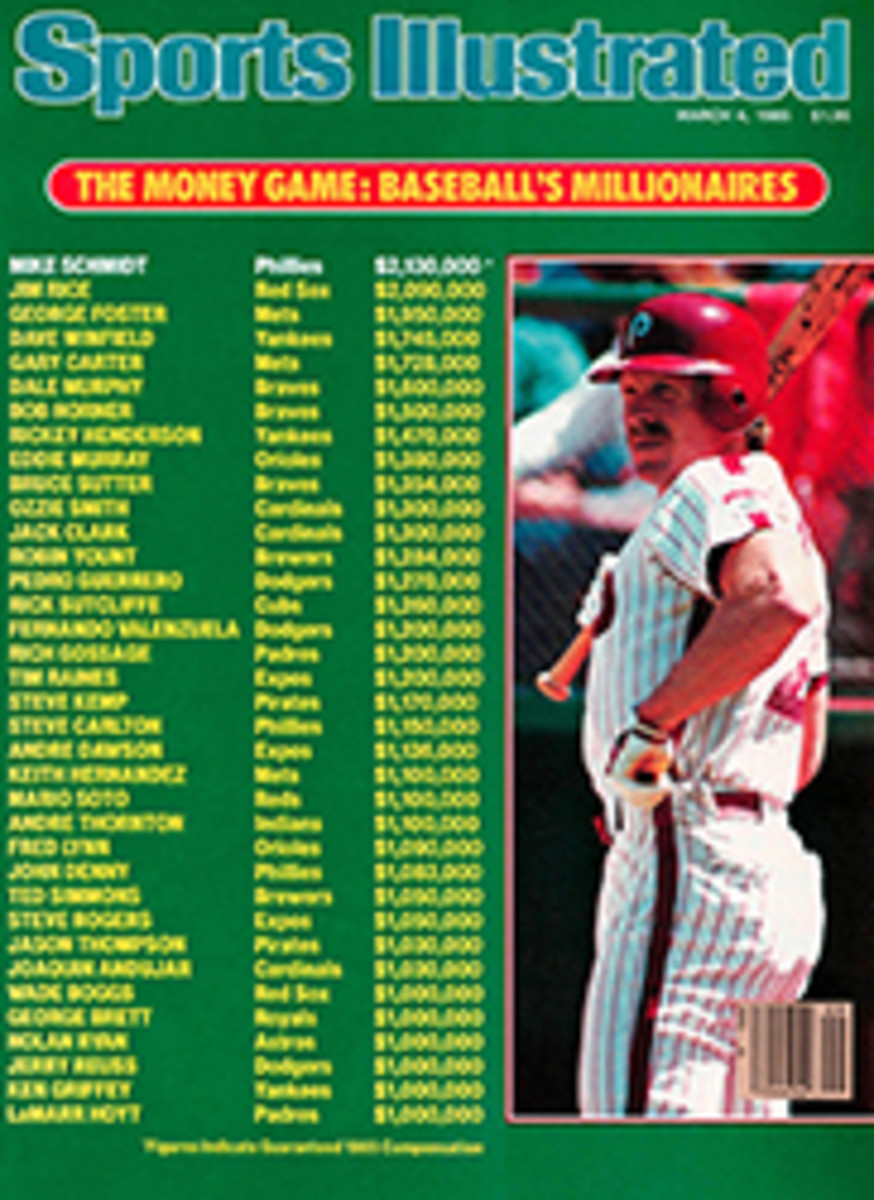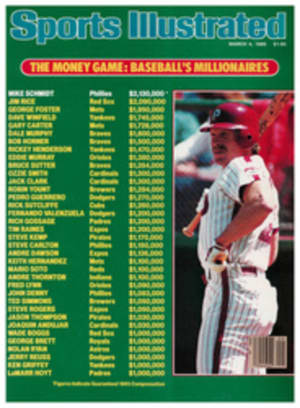
That was a real bash in Miami
Like a Latin American carnival building to a fever pitch, Sunday's Grand Prix on the streets of Miami evolved into a thrilling, foot-stomping bedlam. For 2¾ hours of the three-hour endurance race for big, powerful sports cars, Al Holbert of the U.S. and Derek Bell of England had been in pretty firm control in their ultra-swoopy turbocharged Porsche 962. The main threats to Holbert and Bell, a turbo March-Chevy shared by Emerson Fittipaldi of Brazil and Tony Garcia of Miami and another 962 driven by Bob Wollek of France and A.J. Foyt, had both been detained in the pits for passing the pace car under the yellow flag. Fittipaldi, the two-time former world Formula I champion, had been held up somewhat longer—about the length of time it took to persuade him that committing mayhem on the International Motor Sports Association official who was doing the detaining was not going to win the race. Of that more later.
With the race coming to a close, Bell, who has co-driven the winning car at Le Mans four times, was hanging on for dear life to a lead of nearly 30 seconds. He had already spun twice on a circuit that veteran road racer and Indy car driver Holbert had called "the slipperiest I'd ever been on in my life." Running second was a vivid red March-Chevy V-8 that David Hobbs of England had skillfully positioned there before he handed the wheel over to his co-driver, 21-year-old Darin Brassfield of Los Gatos, Calif.
With 10 minutes to go, a backmarker flipped his car and wrapped it up in a catch fence. The subsequent yellow flag to remove the tangled mess from the exceedingly narrow 1.85-mile street circuit had bunched up the field and wiped out Bell's fat cushion. The foot-stomping began when the green flag dropped. And it was young Brassfield's foot that stomped the hardest.
Bell's engine had loaded up—fouled its plugs—during the slow laps behind the pace car and wasn't accelerating crisply, so Brassfield blew past the No. 14 Porsche on the restart. Holbert, sitting in a tall scorer's chair behind his pit, still sweaty from his driving stint, shook his head in disbelief and budding disgust. Brassfield led Bell down Biscayne Boulevard at 160 mph—a booming red blur followed by a whistling dark-blue streak. The 100,000 sun-baked and breeze-blown fans, many stacked on the roof of the Everglades Hotel or lining the decks of the cruise ship Scandinavian Sun, screamed as loudly as the cars, either pulling for Brassfield to escape or for Bell to reel him in.
With eight laps to go, Brassfield leads by 3.5 seconds. At seven laps, 3.1 seconds. At six laps, Brassfield's March twitches at 90 mph through the "chute." Bell is on his tail! Holbert leaps up and spins around to watch.
At the end of that straight—actually a .35-mile stretch of Biscayne Boulevard—lay a hard right at N.E. 5th Street. And that's where the veteran put it to the rookie (this was only Brassfield's second race in a prototype sports car). "I braked very late, just to show him I was intent," Bell said later. Overtaking on the inside, Bell gave Brassfield's car a tap with his left front fender. Brassfield tried to close the gate on him. But now Bell used Brassfield's car as a backboard, caroming his Porsche off the March to make the pass. And win the race, having completed 111 laps at an average speed of 68.342 mph.
Fittipaldi was incensed. "I feel like for sure we won this race," he said. "At the track, we won this race." But at the pay window, he and Garcia finished third.
Fittipaldi grabbed the lead on Lap 22, just before a yellow caution flag came out for a car that had spun and blocked a turn. The pace car came onto the track. It would tuck in front of the race leader and control the speed of the 36-car field as long as the yellow stayed out. The pace car pulled in front of Fittipaldi, who believes that the official in the pace car—mistakenly thinking that Fittipaldi was not the race leader at the time—waved him by. Wollek, in second place, also thought he was being waved ahead. Holbert, in third, knew that hand signals are easily misinterpreted, so he stayed put. Then, said Fittipaldi, "For my biggest surprise, the next thing I see is a black flag." That meant he was being called into the pits. Fittipaldi and Wollek were held there for one lap to compensate for their scooting ahead of the field, and Fittipaldi was so convinced that he was being victimized that he pounced on the unlucky official whose assignment it was to detain his car. Afterward, Fittipaldi's team, owned by Rafael Sanchez, who was also the promoter of the race, filed a protest. The stewards disallowed it. "I did exactly what they ask me to do, and they took my race away," said a dejected Fittipaldi, promising a lawsuit. Sanchez suing himself?
This field of mostly new prototypes was possibly the strongest of any sports car race, ever. But the Miami street circuit was an absurd venue for 230-mph racers. The turns were too tight and too many, the pavement teeth chattering. And there were railroad crossings. Two of them! The abused cars twitched and jolted and jounced. You could hear parts dragging on the manhole cover in the third turn. Offsetting all that was a $50,000 first-place prize, making the three-year-old Miami GP the richest race for sports cars in the world.
The winners' 962 (sticker price: $220,000) is state of the endurance-racing art, but it wasn't the best setup for darting around downtown because of its power characteristics. To keep the car on the "boost," Holbert and Bell had to drive with a foot on the brake and gas at the same time, coming off the turns. "You need either a gas pedal attached to the brake or three feet," said Holbert, who was a co-winner of the inaugural Miami GP in 1983. That race had been cut short by a torrential downpour after only 38 minutes of competition. A win is a win, and he said then that it hadn't been tainted. However this one was doubtless a whole lot sweeter.
PHOTO
GEORGE TIEDEMANN
Bell (far left, with co-driver Holbert) had to do some banging to bring No. 14 home first.
PHOTO
JOHN IACONO
[See caption above.]
PHOTO
GEORGE TIEDEMANN
Former world champion Fittipaldi was in a furious mood after he was black-flagged.
PHOTO
JOHN IACONO
This lobster scuttled into 10th place.

